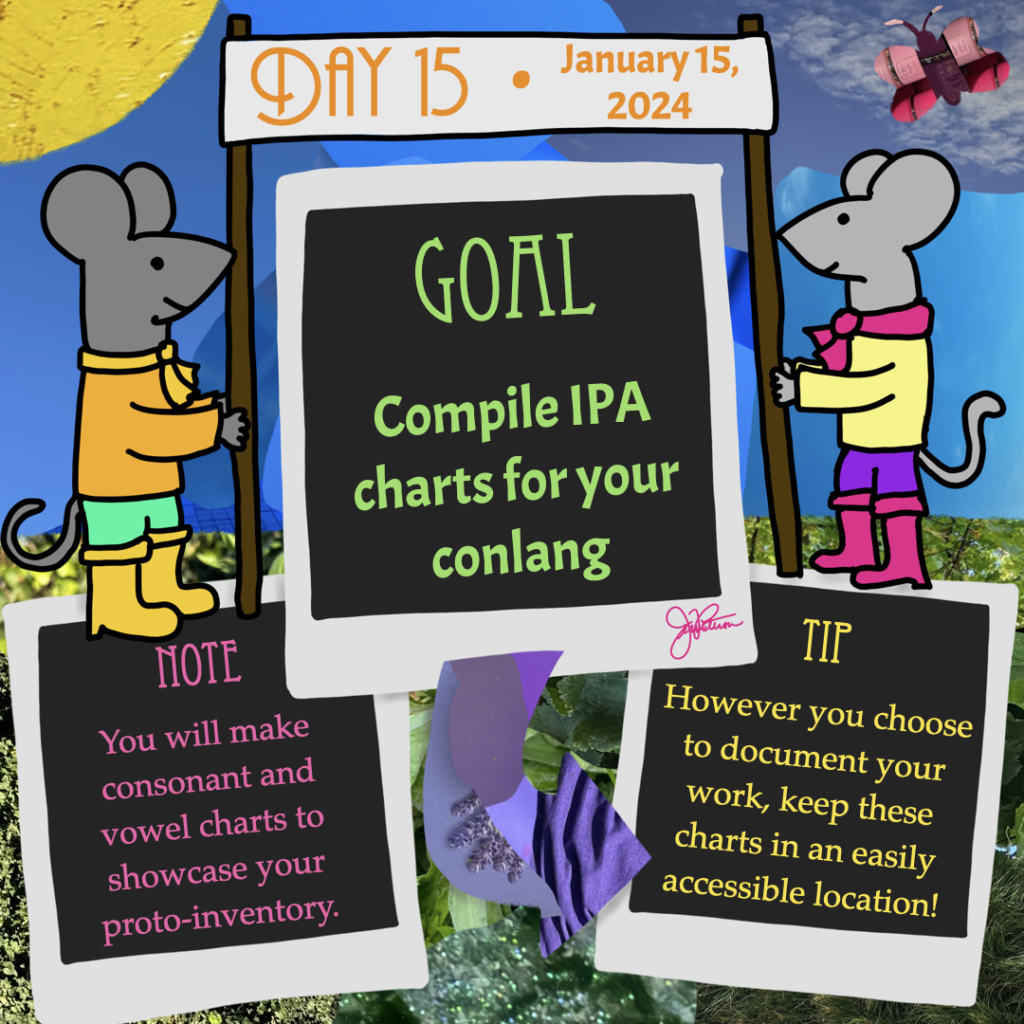
Goal: Compile IPA charts for your conlang
Note: You will make consonant and vowel charts to showcase your proto-inventory.
Tip: However you choose to document your work, keep these charts in an easily accessible location!
Work focus: Solidify/Write/Share
You may have already compiled IPA charts as you selected the sounds that will be a part of your proto-inventory. If that’s you, then wonderful! Make sure you keep those charts in a convenient place, as you will need to reference them whenever you create words to ensure you’re using sounds in your starting sound inventory. You could use today to write up a bit more about your sounds, share your sound inventory with others, or clean up your documentation. Or you might need a little mental break after you review your sound charts to make sure they reflect all your most recent ideas (in that case, enjoy your day!).
However, you may have been jotting notes in a journal or on sticky notes or in random text documents open on your desktop… (Yes, yes, I am talking about myself and my general scattered-about notes as I work on generating ideas and creating lists of features I want to include.) If you find yourself in a similar position, use today to pull all those notes together and create IPA charts for your proto-inventory, making sure you include pulmonic consonants (including any that are co- or double-articulated), any non-pulmonic consonants, consonants with secondary articulations, monophthongs, and diphthongs. Make sure all the sounds you’ve selected for your proto-inventory are represented in your documentation—it will help you as you move forward with the language-creation process.
In the coming week, you will be designing some key features of your language’s phonotactics and then creating your first word forms, which means you need to remember what sounds you have available for creating those proto-forms!
